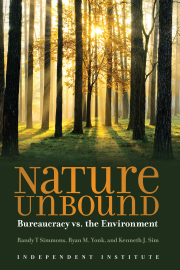What happens in Vegas stays in Vegas. Too bad you can’t say the same for California.
From popular culture to government finance, California has always seemed one step ahead. The Summer of Love was just the beginning.
Since 1986, for example, California has been on a crusade to identify any and every man-made chemical that has been shown in some laboratory to cause cancer, birth defects or reproductive harm. Like other well-meaning government initiatives that backfire on consumers, the official list of suspect chemicals published under the aegis of Proposition 65—the Safe Drinking Water and Toxic Enforcement Act of 1986—now stands at about 800.
Most of these, of course, are absolutely safe at the levels to which you and I typically would be exposed. Placing them on “the list,” however, creates doubt and acts in many cases as a de facto ban.
What’s next? The answer is: another common compound with a tongue-twisting name that environmental activists want vanquished from the market: bisphenol A.
Though you probably have never heard of BPA, as it’s commonly called, it’s ubiquitous in the marketplace, used in baby bottles, plastic wrap, microwaveable food containers, eyeglass frames, shower-curtain liners, CDs and DVDs, water pipes and in the lining of most canned food products.
The demand for restrictions on the use of BPA began to gain traction in mid-2008, when the Canadian government and European Union started to regulate its use. Eager to join the bandwagon, legislation was proposed in the Senate that year to ban its use in children’s products. The “BPA-Free Kids Act of 2008,” sponsored by Sen. Charles E. Schumer (D-N.Y.), didn’t pass.
Those demanding BPA regulation cite studies showing that foods and liquids in containers lined with BPA absorb it. What they don’t tell you is that this “leaching” effect releases only tiny traces of the chemical and that human exposure at these levels is perfectly safe.
A large-scale study by toxicologist Justin Teeguarden, senior research scientist at the federal government’s Pacific Northwest National Laboratory in Richland, Wash., confirmed this: that BPA exposure levels were too low to affect human health. In fact, he said, the levels to which we are exposed are “a thousand times lower” than the levels shown in animal studies to cause problems.
Even the U.S. Food and Drug Administration acknowledged this discrepancy in its most recent assessment of BPA “use in Food Contact Applications.”
Despite this, California appears to be moving forward with its blacklisting. The extended public comment period on BPA’s proposed listing on the Dirty 800 ended just days ago, on March 31. Now the bureaucracy must act—amid a continuing chorus of unfounded claims that BPA poses a critical public health threat.
The facts don’t support such claims. As Dr. L. Earl Gray, senior reproductive biologist and toxicologist with the Environmental Protection Agency, told Jon Entine, senior research fellow at George Mason University’s Center for Health & Risk Communication, “The ‘BPA-is-harmful’ crowd appears impervious to peer-reviewed studies.” He describes their position as “a religious position,” based on faith, rather than fact and reason. “But as scientists and regulators,” Gray said, “we have to go where the data take us.”
Rather than seek an outright ban, which is not supported by the scientific evidence, the anti-BPA activists realize they can accomplish the same goal merely by placing BPA on California’s Proposition 65 blacklist.
The best way to ensure consumer safety is to make sure consumers have access to honest and unbiased scientific information.
There are, of course, circumstances when government must act to protect us against unseen hazards. But blacklisting relatively harmless chemicals like BPA has a different effect: It makes us wonder whether the government is motivated by safety concerns, or politics.
As California goes, so goes the nation.








